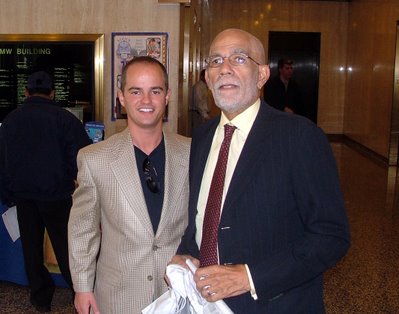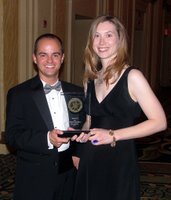Around this country, media and public alike, we're asking ourselves is this the guy? DNA from beneath JonBenet's fingers should answer that. The dried fluid on her underwear, we're hearing could be too weak. One source says there were fluids and the way they mixed may have ruined that sample. Since DA Mary Lacy's office has said they will not talk about evidentiary items, whichever way that goes is probably off limits.
To end any speculation, someone will likely leak the results of the Karr mouth swab and sample from beneath JonBenet's fingernail . If positive, because it will end the echo chamber of skepticism; if negative, because some insider would think it an absurdity for the public to remain in the dark and/or Lacy's Office to face continued questioning about its judgment in Karr's arrest.
No matter what, the prime suspect will remain in custody. He'll can be held initially in California for an absentia conviction on 2001 child pornography charges. If Lacy lacks the evidence she needs...to buy time, it's a foreseeable move for her to leave Karr there temporarily. Once he returns to Colorado, authorities have only 48 hours to charge him. If he's there too long though questions about why the DA is not bringing him back will arise.
Wingnut?There has been never-ending speculation this guy is a "wingnut" seeking a attention, because there are holes in his story. Now, he claims, he didn't make statements that conflict with established facts. Law enforcement agencies often engage in disinformation to catch a criminal. They will put out bogus information so during interrogation the suspect will correct them. Then they know it's their guy. It weeds out the phonies. Is that happening with the Boulder DA's investigation?
We know this for certain, she was not bludgeoned, as he purportedly admitted.
Even though toxicology tests suggest otherwise, he also purportedly admitted to poisoning JonBenet. (This is an area a former investigator tells me, where authorities might issue disinformation).
The problem is the alibis...Not one, not two, but three. And an ex-wife who leaves a guy for sex crimes against kids is unlikely to stick up for him. Given her forthcoming nature, within 24 hours of the arrest...she probably isn't lying, liars generally aren't quick to jump into the spotlight...then again...we just don't know about Mr. Karr.
Strong case?As for a little anecdotal story that could signify what's to come...I was talking to Fox's Greta Van Susteren about how it doesn't seem like DA Lacy has a strong case. Her presser lacked the tone of a DA hot on big break. Answering a question I asked about whether this took John Ramsey off the suspect list, Lacy responded: "John Ramsey is presumed innocent. John Mark Karr is presumed innocent."
Frankly that's a strange answer and doesn't seem like the attitude of a DA with a strong case. Then again, Lacy's relaxed demeanor could simply be that of a DA who has an ace up her sleeve and a poker face meant to confuse.
Should we (the media) have been more skeptical before full-blown coverage? We didn't really have a choice. The Asian press decided for us. The attention it was getting there and the video via feed overrode most meaningful editorial meetings on American soil.
Back to Greta though, she thinks the DA's case is pretty bunk right now and told me as much. She's so confident in this story, she's already left Boulder...for San Francisco. That could be a sign of things to come. Though most everyone else is still doing sidewalk duty outside the Boulder County courthouse.
Karr is expected to be en route to California tomorrow. How long he's there could dictate what comes next. An immediate trip from California to Colorado would suggest confidence in the case on the part of the DA. The longer Karr sits in a California jail cell, the more the public is going to begin to wonder about the validity of DA Lacy's case.




